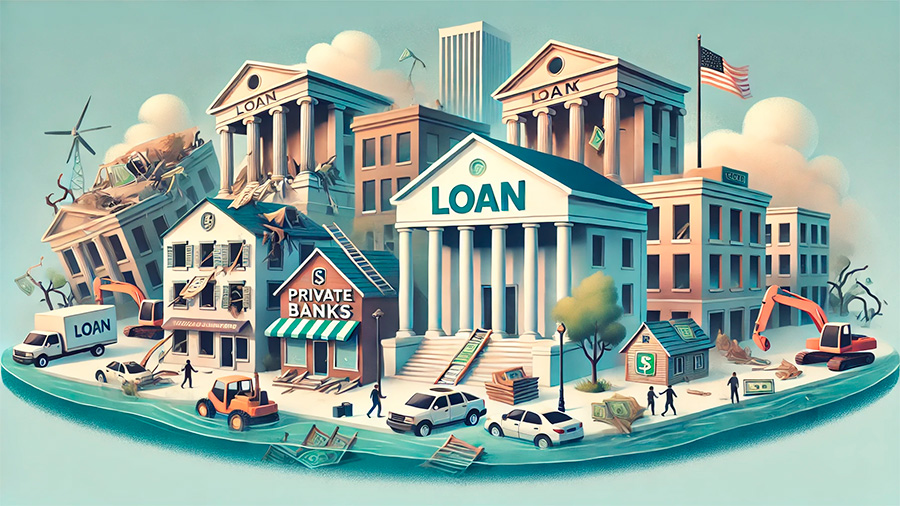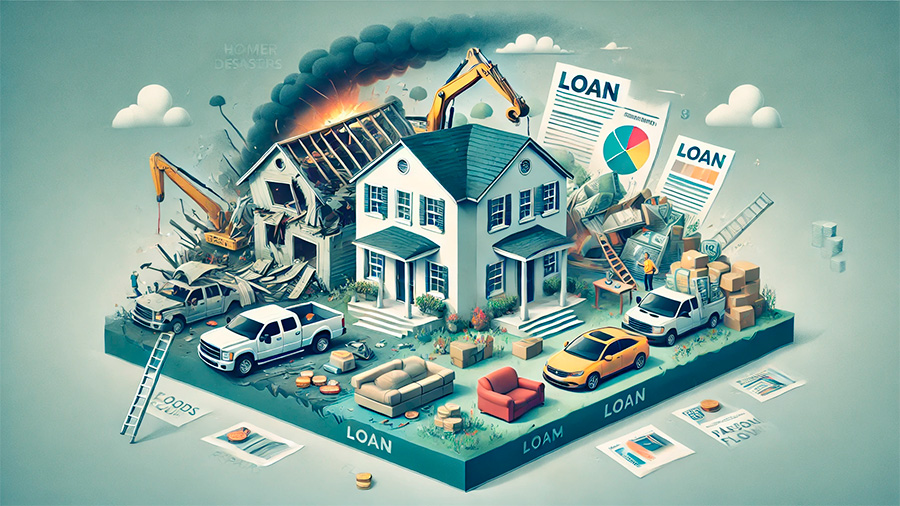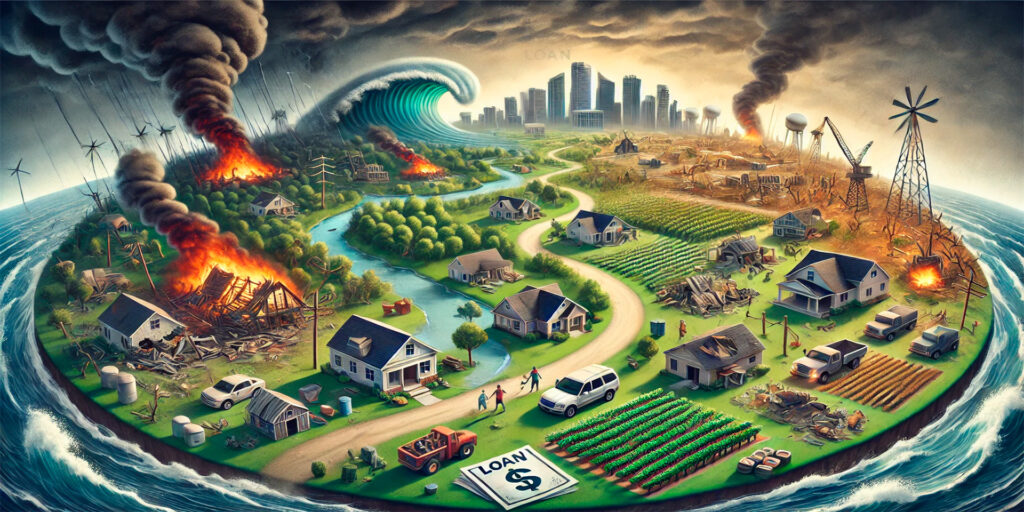When weather disasters strike, the financial impact on individuals and businesses can be devastating. From hurricanes and floods to wildfires and droughts, extreme weather events can cause significant damage to homes, infrastructure, and agricultural production. In the aftermath of these disasters, recovery often requires substantial financial resources that many are not prepared for. This is where loans become essential tools for recovery, providing the funds needed to rebuild, restore, and continue operations.
This article explores how loans can help individuals and businesses recover from weather disasters, offering a lifeline during times of crisis.
The Financial Impact of Weather Disasters
Weather disasters can lead to sudden and severe financial losses. Homes and businesses can be damaged or destroyed, infrastructure may need extensive repairs, and agricultural production can be wiped out. These events often leave individuals and businesses struggling to cover the costs of recovery, with insurance payouts sometimes falling short or being delayed. Loans offer a vital source of funding to bridge the gap, providing immediate access to capital for rebuilding and recovery.
1. Damage to Property and Infrastructure
One of the most significant financial impacts of weather disasters is the destruction of property and infrastructure. Homes may be flooded, roofs torn off by high winds, and roads washed away. For businesses, this damage can include not only physical infrastructure but also inventory and equipment losses. Repairing or replacing these assets is often expensive, and without access to funds, recovery efforts can be delayed or stalled.
Common property and infrastructure damages:
- Flooding: Homes and businesses face extensive water damage, leading to costly repairs or total rebuilding.
- Wind damage: Hurricanes and tornadoes can destroy buildings, infrastructure, and power lines, requiring substantial repair work.
2. Disruptions to Business Operations
Weather disasters also disrupt business operations, leading to revenue losses that compound the financial strain. Businesses may be forced to shut down temporarily due to damage or supply chain interruptions, making it difficult to meet financial obligations like payroll, rent, and vendor payments. Loans can help cover these operational costs, ensuring that businesses can continue to pay employees and suppliers while repairs are underway.
Impact on business operations:
- Temporary closures: Businesses may need to close due to property damage, reducing revenue during the recovery period.
- Supply chain disruptions: Damage to infrastructure can delay shipments of essential goods, affecting production and sales.

How Loans Help in Times of Crisis
Loans are crucial for providing the immediate financial resources necessary for recovery after a weather disaster. Whether it’s a government-backed disaster loan or a private loan from a financial institution, these funds can be used to repair property, replace lost inventory, and cover the costs of recovery operations. Below are several ways loans can assist individuals and businesses during times of crisis.
1. Government Disaster Loans
In many countries, government-backed disaster loans are available to help individuals and businesses recover from weather-related crises. For example, in the United States, the Small Business Administration (SBA) offers low-interest disaster loans to businesses, homeowners, and renters affected by natural disasters. These loans can be used for a wide range of purposes, including repairing damaged property, replacing lost inventory, and covering temporary living expenses.
Benefits of government disaster loans:
- Low-interest rates: Government-backed loans typically offer lower interest rates than private loans, making them more affordable for borrowers in times of crisis.
- Flexible use of funds: Disaster loans can be used for a variety of recovery-related expenses, including repairs, replacement of assets, and temporary housing.
2. Private Loans for Recovery
In addition to government programs, private lenders often offer loans to help individuals and businesses recover from weather disasters. These loans may come with higher interest rates than government-backed options but can still provide a crucial source of funding when other forms of assistance are unavailable or insufficient. Businesses may also consider taking out lines of credit or equipment loans to replace damaged machinery or cover ongoing operational costs.
How private loans support recovery efforts:
- Quick access to funds: Private loans can often be approved and disbursed quickly, allowing borrowers to begin repairs and recovery efforts without delay.
- Customized loan options: Lenders may offer tailored loan products, such as equipment financing or working capital loans, to address specific recovery needs.

Using Loans for Personal Recovery
For individuals affected by weather disasters, loans can provide a lifeline for rebuilding their lives. From repairing homes to replacing lost possessions, personal loans help cover the costs that insurance may not fully address. Additionally, loans can be used to cover living expenses during the recovery period, especially if individuals are displaced or unable to return to their homes immediately.
1. Home Repair and Rebuilding
After a disaster, many homeowners face significant repair costs that insurance may not cover entirely. Loans can help fill this gap by providing the funds needed to rebuild or repair homes damaged by floods, storms, or fires. In some cases, loans may also be used to make homes more resilient to future weather disasters, such as by raising foundations, installing storm shutters, or reinforcing roofs.
How loans assist with home repairs:
- Repairing structural damage: Loans provide the funds needed to fix roofs, walls, and foundations damaged by extreme weather events.
- Home improvements: Borrowers can use loan funds to improve their homes’ resilience to future disasters, reducing the likelihood of future damage.
2. Replacing Personal Property
In addition to home damage, weather disasters can result in the loss of personal property, such as furniture, clothing, and vehicles. Replacing these items can be expensive, especially if insurance payouts are delayed or insufficient. Personal loans can be used to replace essential items, ensuring that individuals and families can return to normal life as quickly as possible.
Common uses for personal recovery loans:
- Replacing vehicles: Loans can help cover the cost of replacing cars or trucks damaged in floods or storms.
- Purchasing new appliances: After a disaster, loans can be used to replace essential household items, such as refrigerators, washers, and dryers.
Loans for Business Recovery
For businesses, access to loans is critical for maintaining operations and rebuilding after a disaster. Loans can be used to repair damaged facilities, replace inventory, and cover the costs of reopening. Additionally, working capital loans or lines of credit can help businesses continue to meet payroll, pay suppliers, and cover other operational expenses while the recovery process is underway.
1. Repairing Business Facilities
Many businesses face significant damage to their facilities during weather disasters, from flooding in office spaces to structural damage in manufacturing plants. Loans provide the necessary funding to repair or rebuild these facilities, allowing businesses to resume operations as quickly as possible.
How loans help with business facility repairs:
- Restoring production spaces: Loans can be used to repair damage to production facilities, ensuring that businesses can continue manufacturing or providing services.
- Rebuilding storefronts: Retailers can use loans to rebuild or repair storefronts damaged by storms, allowing them to reopen and resume sales.
2. Replacing Lost Inventory and Equipment
Businesses that lose inventory or equipment during a disaster may struggle to reopen or continue operations. Loans can be used to replace lost inventory, allowing businesses to restock their shelves and meet customer demand. Additionally, equipment loans can help replace damaged machinery, ensuring that production can continue without significant delays.
Common uses for business recovery loans:
- Inventory replacement: Businesses can use loans to purchase new inventory and replenish stock lost during the disaster.
- Equipment financing: Loans can be used to replace damaged or destroyed equipment, ensuring that production lines can be restored quickly.
Conclusion
Weather disasters can have a profound financial impact on both individuals and businesses, causing damage to property, infrastructure, and operations. Loans play a crucial role in helping people recover from these crises by providing the funds needed for repairs, replacements, and ongoing operational expenses. Whether through government-backed programs or private lending, loans are essential tools in ensuring that recovery efforts can proceed smoothly and efficiently, helping communities rebuild and move forward after a disaster.



